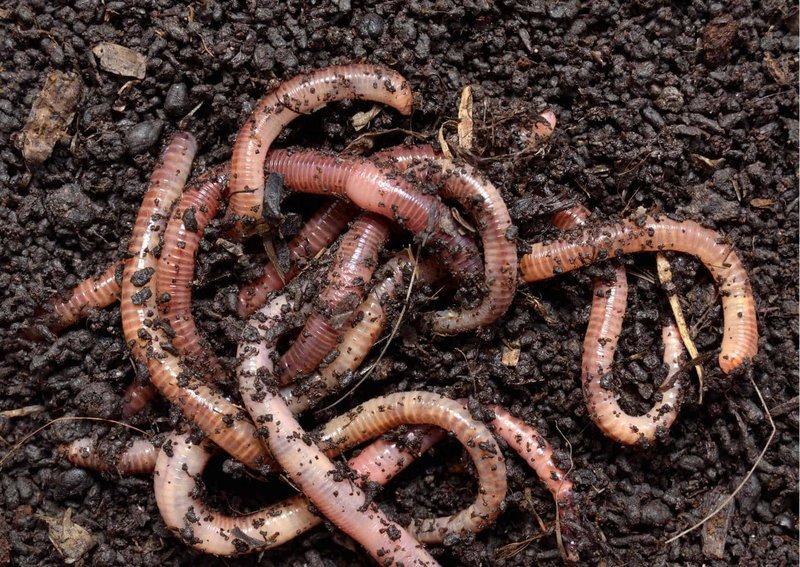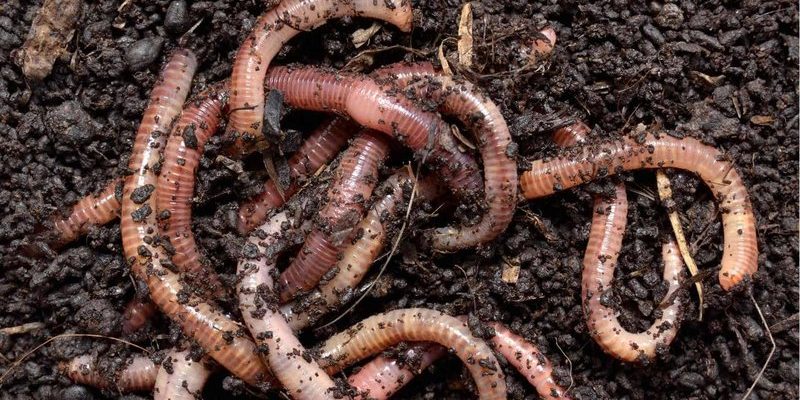
Imagine a cozy blanket of soil where earthworms thrive. They’re constantly moving and interacting with their environment, but temperatures can really shake up their routines. For example, on cooler days, you might find them closer to the surface, while on scorching afternoons, they dig deeper to escape the heat. Let’s dig deeper into how temperature affects these fascinating creatures and why it matters in our ecosystems.
Understanding Earthworm Habitats
Earthworms are commonly found in rich, moist soils, which make the perfect habitat for them. They thrive in environments that provide essential nutrients and moisture. But what happens when the temperatures shift? Earthworms are ectothermic, meaning their body temperature aligns with their surroundings. This means that as temperatures rise or fall, their activities adapt accordingly.
In warmer conditions, earthworms tend to burrow deeper into the soil, seeking cooler, moister layers. This behavior is crucial for their survival. If they remain near the surface in high heat, they risk dehydration. On the flip side, when temperatures drop too low, they may slow down significantly or even enter a state of dormancy to conserve energy.
The Ideal Temperature Range for Earthworms
So, what’s the sweet spot for earthworms? Generally, they prefer temperatures between **59°F to 77°F (15°C to 25°C)**. Within this range, they’re most active, feeding, and reproducing. When the temperature falls below this ideal range or climbs above it, their activity can become severely affected.
Studies show that at higher temperatures, around **86°F (30°C)**, earthworms start to exhibit stress. They may become lethargic, eat less, and even die if exposure is prolonged. In colder conditions, particularly below **50°F (10°C)**, their metabolism slows, making them less effective at breaking down organic matter.
Behavioral Changes in Different Temperatures
You might be wondering how exactly temperature shifts affect their behavior. It boils down to **activity levels and reproductive cycles**.
– **Warm Temperatures**: Earthworms tend to be more active when temperatures rise within their ideal range. They come to the surface more often to feed, and you might notice them more frequently in your garden. Warmer soil temps encourage reproduction, leading to higher earthworm populations.
– **Cold Temperatures**: In colder weather, earthworms usually go deeper into the soil, making them harder to find. They enter a sort of hibernation, slowing down their metabolism, which means they eat less and ultimately become less beneficial to soil health until it warms up again.
Impact on Soil Health and Agriculture
The behavior of earthworms significantly impacts soil health, which is critical for agriculture and gardening. Their movement helps aerate the soil, allowing water and nutrients to penetrate deeper. When they digest organic matter, they contribute to nutrient cycling and enhance soil fertility.
If temperatures fluctuate drastically, it can affect earthworm populations, ultimately leading to less aerated and nutrient-rich soil. This could mean the difference between a thriving garden and one that struggles to produce. Keeping an eye on temperature extremes can help gardeners and farmers maintain healthy earthworm populations.
Temperature Extremes and Earthworm Survival
One crucial aspect to consider is how extreme temperatures affect earthworm survival.
– **Heat Waves**: During heat waves, earthworms can face deadly dehydration. Without sufficient moisture in the soil, they may not survive, leading to population declines that can take years to recover.
– **Frost and Freezing**: On the other hand, deep freezing can cause physical damage to their bodies. However, interestingly, they have shown resilience by burrowing below the frost line, which helps protect them against freezing temperatures.
Understanding these extremes is essential for anyone interested in gardening or farming. Maintaining a balanced ecosystem means paying attention to these temperature changes and their potential impact on earthworms.
Ways to Support Earthworm Populations
To ensure earthworms thrive in your garden or farm, there are several practices you can adopt:
- Moisture Management: Keep the soil moist but not overly saturated. Mulching can help retain moisture and keep temperatures stable.
- Avoid Chemical Treatments: Pesticides and chemical fertilizers can harm earthworm populations. Opt for organic methods when possible.
- Plant Cover Crops: These help maintain soil structure and provide food for earthworms, ensuring they have a sustainable environment.
- Practice No-Till Gardening: This approach preserves the habitat of earthworms and prevents disturbance of their natural activity.
By implementing these practices, you can create a healthy environment for earthworms, benefiting your entire ecosystem.
The Bottom Line: Temperature Matters
In summary, temperature plays a critical role in how earthworms behave and interact with their environment. Their survival and activity depend on a delicate balance that is affected by both heat and cold. Maintaining optimal conditions is essential for these little creatures, as they play a big role in our ecosystems and agriculture.
Next time you’re out in the garden, take a moment to think about the earthworms beneath your feet. Their well-being is intricately connected to the health of your soil, and by understanding how temperature affects their behavior, you can play a part in fostering a thriving environment. Remember, a healthy earthworm population means a healthier planet for all of us!

